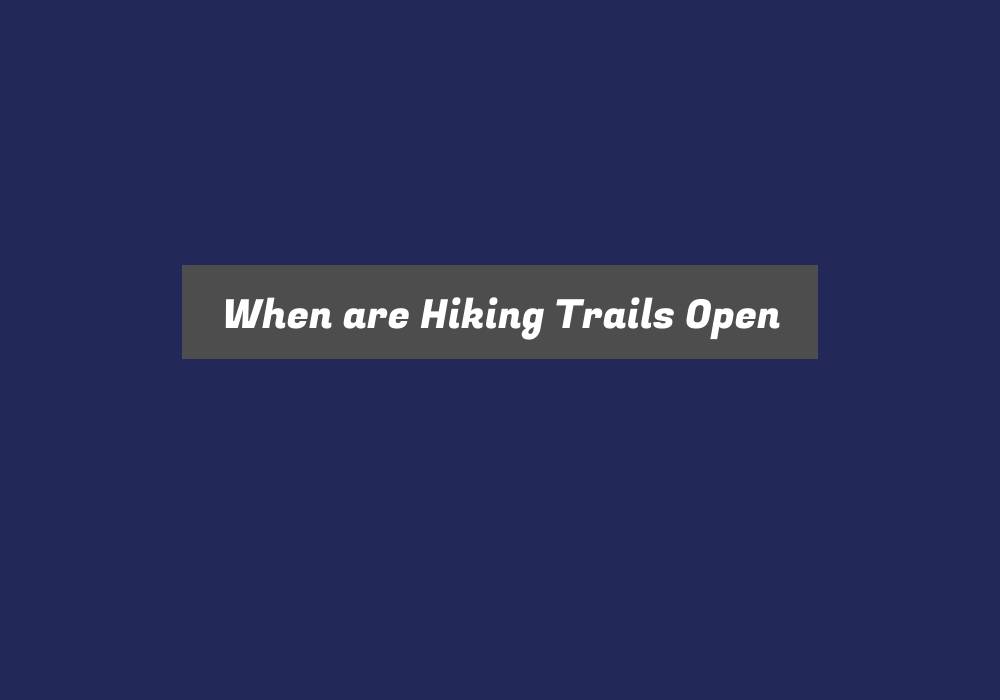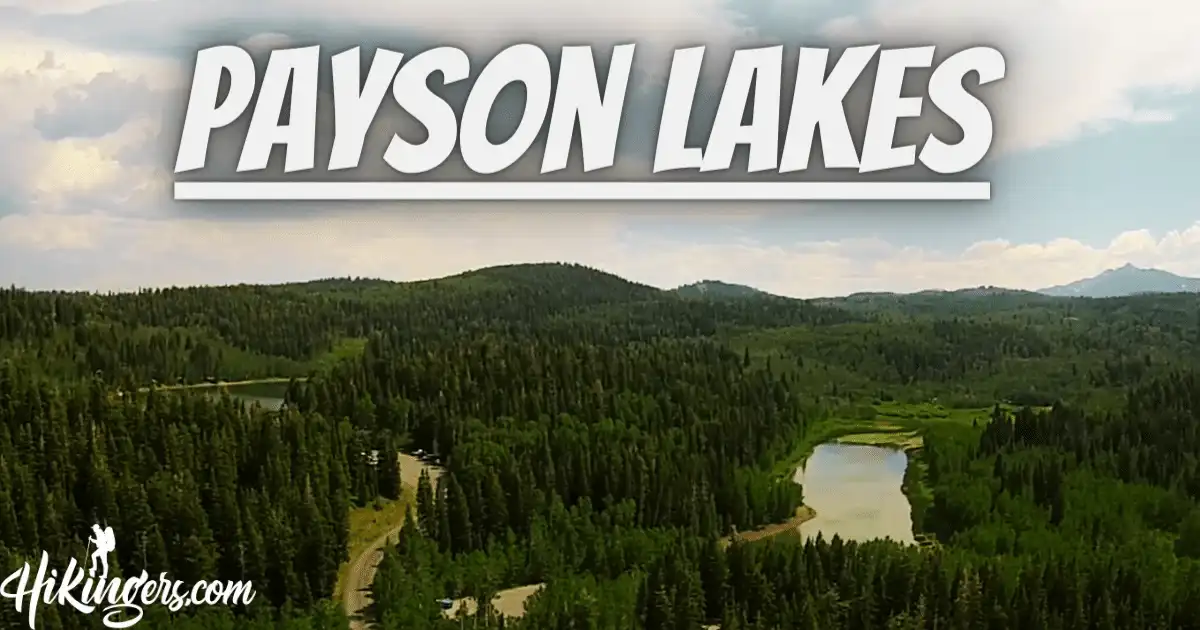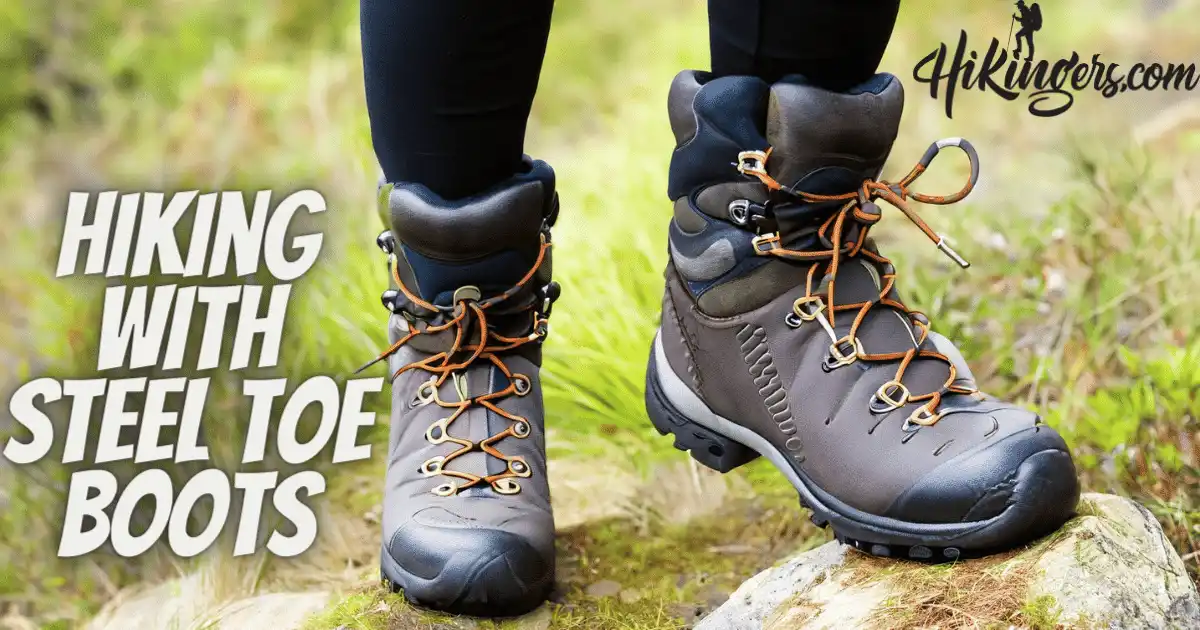Determining optimal seasons for hitting your favorite trails means understanding seasonal access policies, weather impacts, and preparations needed before descending into local canyons or scaling rocky vistas. Time your adventures right packing proper gear for dates aimed at realizing peak conditions each region offers.
Spring Trail Access
Balancing snow melt, runoff, and mud across early spring months:
| Spring Month | Considerations | Traction Aids |
|---|---|---|
| March | Snow packing down revealing some paths but runoff peaking | Microspikes, stabilizers, gaiters |
| April | Residual mud across lower elevations | Waterproof boots, trekking poles |
| May | Higher routes clearing fully with hardier wildflowers blooming | Trail runners on dry ground |
As winter snows recede, navigate carefully across saturated soils and flooded zone edges early season before full summer drying occurs.
Summer Trail Access
Manage heat, bugs, and fickle storm conditions common midyear:
| Summer Month | Preparedness | Gear |
|---|---|---|
| June | Snow finally melts opening high passes | Light layers, lots of water |
| July | Monsoons flow briefly but intensely | Rain gear, weather radio |
| August | Insects peak hungry for final feeds before winter | Picaridin spray, head nets |
| September | Breezy days with chillier nights | Variable insulating layers |
Watch weather patterns crossing distant ridges prone to lightning strikes during monsoons before transcending exposed summits.
Fall Trail Access
Enjoy color peaks between variable mud and sudden cold snaps:
| Fall Month | Conditions | Clothing |
|---|---|---|
| October | Chilly mornings with sunny, cool afternoons | Synthetic base layers, soft shell mid-layers |
| November | Deep snow limits low-land routes | Microspikes, heavy insulating parkas |
| December | Deep snow limits low land routes | Snowshoes, alpine skis, winter traction |
Prepare for widely ranging conditions sometimes within the same week as winter gains firm footholds across higher zones.
Winter Trail Access
Breaking paths through snowed-under winter wonderlands by:
| Month | Regional Differences | Gear |
|---|---|---|
| January | Rain versus snowfall varies across zones | Trekkers or snowshoes distribute weight |
| February | The depth of base pack continues building | Ski gear opens vast terrain efficiently |
| March | Elevations dictate snow longevity | Microspikes add stability lace-on ice traction |
Identify zones sheltering best from bitter winds if braving exposed ridges through the worst midwinter offers before exhilarating melt-off.
Year-Round Access Considerations
Some routes allow passage despite extreme conditions using proper precautions:
| Desert and canyon hikes | Higher summer sun dangers |
| Heavily wooded lowland forest walks | Surprisingly icy even at lower elevations |
| Coastal routes | Intense winds and rain warrant backup gear readiness |
| Wider valley dirt roads | Accessible when adjacent trails block |
| Ridges downwind of lakes | Escaping most dumped snow stacks |
Consider skylines redirecting worst weather factors opening windows for peaceful walking when surrounded peaks receive the main blunt of storms.
Regional Differences
Local norms vary by topography, elevations, and seasonal weather patterns:
| Location | Best Hiking Months | Alternatives in Winter |
|---|---|---|
| Pacific Northwest | July-September | Coastal walks, microspikes for forest trails |
| Rocky Mountains | June-August | Rent snowshoes and ski gear for high trails |
| Midwestern River Valleys | May-October | Greater mileage focuses between brief cold snaps |
| Southeast Swamps | February-April plus November | Heavy mosquito and humid heat waves bracket best conditions |
| Southwest Deserts | October through Early May | Stick closer to canyon floors avoiding most heat and storms |
Park Rules Differences
Public land regulations affect allowable dates:
| Management | Typical Regulations | Season Impacts |
|---|---|---|
| Federal Parks | Strictest limits protecting natural resources | Shortened spring and fall seasons |
| County Parks | Mixed usage recreation through preservation | Year-round trail options |
| Local Land Trusts | Volunteered maintenance expands budgets | Scheduling varies across neighborhoods |
| Private Reserve Access | Custom experiences catered upon request | Paying supplements upkeep and limitations |
Review intended route status across every level from municipal up to federal when arranging travel, especially regarding accessibility.
Night Hiking Allowances
Many recreational paths stay open after dark by bringing extra gear like:
- Headlamps on flashing and steady modes
- Reflective exterior layers aiding visibility
- Waterproof trail guides and area maps
- External phone charger batteries easily accessed
- Emergency space blankets retain heat if injured overnight
Assume zero phone signal reliance hiking isolated zones off daylight beaten paths.
Trail Status Resources
Check conditions through:
- Park or forest service websites listing openings plus seasonal hazard warnings like fire restrictions or road washouts
- Local outdoor gear shops suggest alternates when target adventures face limitations
- Trail condition sites like All Trails note real-time comments from fellow adventurers narrowly ahead of intended dates
| Month | Likely Trail Status | Backup Plans |
|---|---|---|
| January | Rent snow gear and explore easily accessible zones | Exposed routes still snow-packed |
| July | Choose shaded woodland walks overpasses | Choose shaded woodland walks over passes |
| September | Brief fall color displays | Catch final wildflowers across lower peaks |
Conclusion
Seek your ideal adventure windows by reviewing regional norms and real-time status from reliable sources. Map prospective trails ahead of making plans filtering by allowed dates, necessary equipment needed, and recent feedback when arranging trips around optimal outside opportunities balanced across seasonal extremes. Time-flexible journeys when targets shine brightest but keep backup options standing by should original aims face impassable setbacks from weather and closures beyond control.
Frequently Asked Questions About Hiking Trail Open Seasons
When do most hiking trails open after winter?
At lower altitudes, many trail systems welcome hikers starting in March once snow packs firm up, ice melts and seasonal closures protecting thawing grounds commence opening. But higher ridges and passes require waiting until June or even July in some years for full access after mud dries and runoff flooding ceases.
Can I hike year-round on desert trails?
Yes, beyond summer months demanding extreme heat precautions, southwestern canyon routes allow comfortable travel almost year-round. Just time snowy months in nearby peaks carefully between storms while lower zones see periods of windblown dust or flash flooding warranting extra preparation. Overall though, deserts offer the most reliable window options.
Do park rangers enforce seasonal trail closures?
Yes, land managers prohibit access across environmentally sensitive trails during muddy seasons or fire-prone dried-out periods. Budget limitations keep all routes from active patrols but violation fines still apply if caught trespassing beyond barriers like warning signs, gates, or posted notifications. Respect all posted off-limit guidance.
Can I call the park office to check if specific trails are open?
Definitely contact administrators directly because general park open hours don’t always align with specific trail restrictions based on erosion risks, rehabilitation projects, or residual impact zones still recovering from recent fires or floods. Specialized micro conditions dictate boot on the ground options fairly fluidly even experts checking weekly agency sites can miss catching fully.
Will trail gates and bathroom access indicate if paths are open?
While helpful indicators generally, neither preparatory infrastructure like bathrooms nor gates definitively guarantees that intended routes stand clear for passage that particular day. Assume nothing checking additional sources like visitor centers, bulletin boards, or ranger checkpoints because many factors influence administrative decisions opening or closing route segments sporadically due to weather, usage levels impacting vegetation or wildlife.
Are Hunting seasons a good indicator of winter trail closures?
As a general barometer for navigable conditions into early winter, hunting tags likely align directionally to suitable months for gear like snow shoes or micro spikes to attempt forested climbs avoiding conflicts with seasons-focused firearms-based camps probably occupying drivable access points. Once tags wrap trails transition to cross-country skiing and show shoe-focused audiences instead through the deepest winter drifts.
Can I ask other hikers about trail status when I arrive to hike?
Definitely polling fellow adventurers finishing intended routes offers updated, accurate guidance because only ones having just completed knowing firsthand if conditions pass muster fully or posed limitations not documented reaching that access point. They represent real “boots on the ground” confirming beyond web updates potentially outdated by recent weather shifts. Quick conversations prevent wasted long-distance drives.
Why are higher elevation trails more risky into late spring?
Extended northern exposure plus tree coverage delay snow melt pooling runoff longer across steep routes risking slips, burial under residual opaque drifts across narrow switchback, and sudden overflow flash flooding potential unseen where tumbling creeks buried under remaining icy tunnels still structurally questionable without having witnessed full thaw and refreeze cycles vetting rock solidity so late into transitional weeks when so much in flux.
Do southern-facing trails clear faster in spring?
Definitely, aspects favoring greater direct sunlight exposure like southern vistas clear faster as winter recedes because accumulated freeze-thaw cycles more rapidly progress through transitional weeks. Just take care even into late spring since these same routes turn hottest and most draining as peak summer sun angles arrive. Plan according to seasons smartly accounting for all seasonal extremes encountered over full years before assuming clear means comfortable through the entirety of variable annual cycles.
Are coastal trails more prone to closures than inland routes?
Definitely, coastal venues face higher closure rates because heavy precipitation-driven trail damage happens continuously across wet seasons not just singular freeze and thaw churn inland. Also, tidal zones see restrictions protecting wildlife while exposed headlands close when winds whip waves furiously enough to threaten unprepared visitors. Check oceanfront paths diligently before assuming access guaranteed along beaches when inland options are still open.
Can hunting season closures tell me when winter trail access starts?
As general indicators towards late fall, check hunting tags timing last firearm-based encampments probably occupying initial drivable trailheads and gates inversely indicating opening weeks for subsequent winter sports fans parking those same areas. Basically once guns quiet down to protect that closing season, signs point toward snow shoe stomping slope candidates ready across deeper mountaintop drifts. Using fall closures helps predict spring access inversely.
Do park staff post winter trail status online?
Many public land managers directly update webpages highlighting winter-specific closures like clearly demarking cross-country skiing routes versus snow shoe-only zones when base depths reach differentiated usability thresholds. They want enthusiasts to stay up to date choosing allowed options even though intermittently between storm cycles so check sites regularly as weekend plans firm up avoiding wasted long-distance drives when conditions vary fluidly.
Why do high-country trails close earlier into fall than desert routes?
Higher altitude most northern exposure positioned pathways see winter arrive earliest forcing seasonal shutdown well before lower, southern exposed desert venues still enjoying extended comfortable fall climate windows. Pay attention by region knowing elevations and prevailing cloud/snow accumulation aspects dictate closing decisions even within the same park boundaries where distinct micro-climates predominate by zone.
How soon after rain do muddy trails typically reopen?
Dependent significantly on supporting subsurface composition plus overall gradient and water runoff channeling rates, many soaked trails require days if not weeks fully dry out before authorized reopening notices go posted following extended regional rainstorms. Check sites obsessively after major precipitation events expecting delays lasting as long trails weep moisture and require boots on the ground stability inspections checking safety prior to welcoming public access again.
You May Also Like

My name is David James I am an adventurous hiker based in California. Through this weblog, I percentage my passion for exploring nature’s wonders, documenting breathtaking trails and hidden gemstones.



